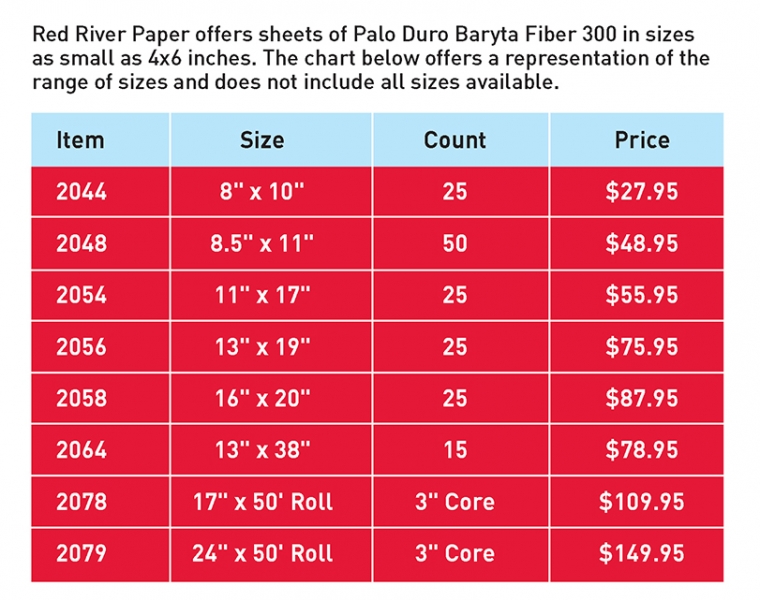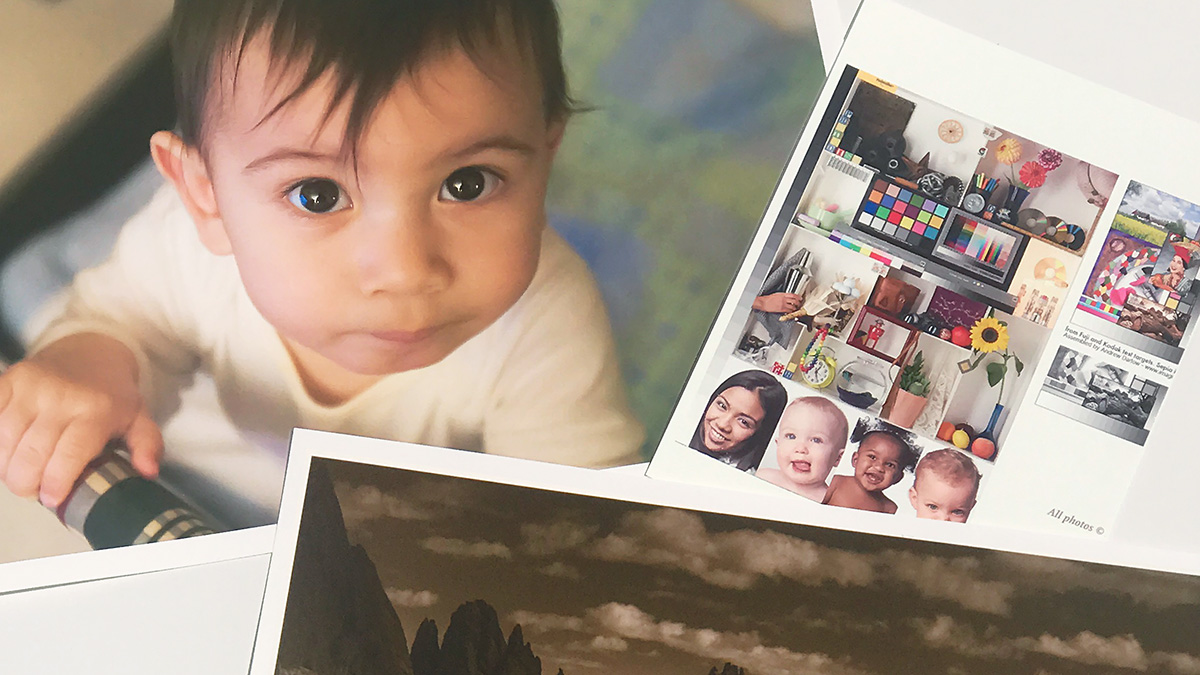Review: Red River Paper Palo Duro Baryta Fiber 300 Photo Paper
Review: Red River Paper Palo Duro Baryta Fiber 300 photographic paper is a standout in a crowded market.
5.30.2019
Remake of an Ansel Adams favorite
There are few paper types that showcase an image’s depth and color as well as high-quality semi-gloss or glossy baryta inkjet papers. There are many on the market from which to choose, with Red River Paper being a leader in this category.
The company recently relaunched a paper it offered from 2012 to 2016. Renamed Palo Duro Baryta Fiber, the paper has a 100% alpha-cellulose base stock, a weight of 300 gsm, and a thickness of 13.8 mil. There are no printed logos on the back, and the base stock is acid-free, lignin-free, and buffered with calcium carbonate. It’s available in a wide range of sheet and roll sizes up to 44 inches wide, including some sheet sizes that are rarely seen from other companies, including 16x20-, 17x25- and 13x38-inch sheets (ideal for panoramic prints on 13- or 17-inch wide printers).
I received two 25-sheet boxes for testing (8.5x11 and 13x19). The boxes are sturdy and came well protected in a bubble-padded box to protect them from damage. I used a pigment ink printer (Epson Stylus Pro 3880) and was able to feed the sheets through both the auto sheet feeder as well as the rear manual feed slot.
PRINT QUALITY
Color saturation, sharpness, skin tones, and the rendering of solid tonal areas (both dark and light) were outstanding. I especially like the paper’s slight texture, subtle gloss, and hint of a metallic sheen. The paper’s tone is slightly off-white, but it looks quite bright to my eye under a range of different lighting conditions. That said, you may prefer a cooler-toned paper for certain types of black-and-white printing or when you want a neutral paper base. I made some black-and-white prints that have a look and feel similar to prints I used to make in the darkroom. Red River’s website states, “Palo Duro Baryta has been described as ‘as close as you can get to Oriental New Seagull G’, which was a favorite of Ansel Adams.”

FOR BEST RESULTS
Red River provides custom profiles for all of its papers for many Canon, Epson and HP printers. The company also suggests the best paper types to choose inside the printer driver, including recommended paper thickness settings. Users can find these suggestions on the Red River website, on a printed sheet inside each box, and in a PDF that’s included in a zip file with each of their custom paper profiles.
The instructions in the PDF for the Epson 3880 (and many other Epson printers) recommend reducing the Color Density (found under Advanced Media Control) between -8 and -15 to avoid paper curl and potential contact between the printhead and paper when printing. I would recommend using the front or rear manual feed tray if your printer has that option (some have both), especially when your image has heavy ink coverage. I chose -8 Color Density for most of my tests and primarily used the rear manual feed tray. I observed slight paper curling with some of my 13x19 prints, but the prints flattened out perfectly within a short time (under 20 minutes). According to Red River Paper, if you experience the issue, it will generally be with Epson pigment ink printers due to the way the ink can cause the paper's matte fiber back to slightly curl.
Decide which profile works best for you by comparing prints made with Red River profiles to those made with a semi-gloss paper profile provided by your printer manufacturer. You can also make your own custom profiles or have them made for you. It’s helpful to make test prints at multiple resolutions (e.g. 1,440 and 2,880dpi, with and without high speed enabled) to see if one looks better to you. My preference during these tests was 2,880dpi with high speed enabled.
CONCLUSION
Red River Paper Palo Duro Baryta Fiber 300 is an exceptional heavyweight fine-art semi-gloss paper that stands out in a crowded field. It has excellent Dmax (maximum density), renders details and saturated colors beautifully, and works well for portraits, still-lifes, and monotone/split-tone images. The paper is also considerably less expensive than most other baryta and heavyweight semi-gloss/glossy fine-art inkjet papers on the market.
Andrew Darlow is a photographer and digital imaging consultant based in the New York City area.
Tags: printing

